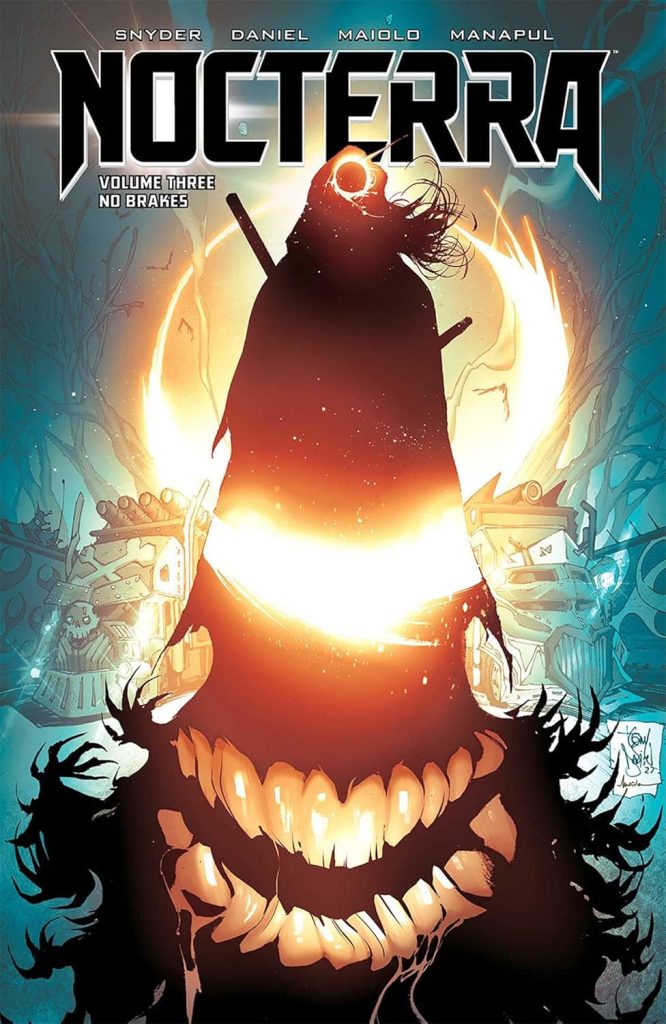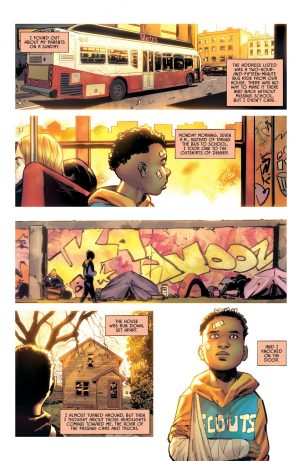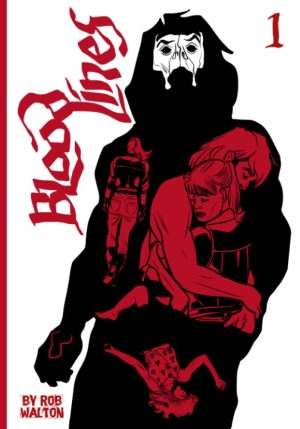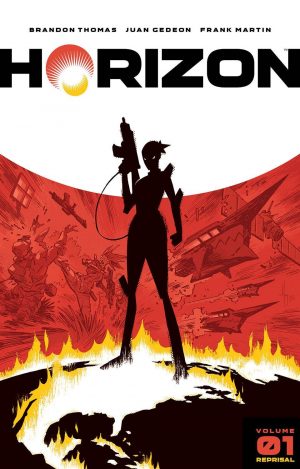Review by Frank Plowright
It’s been fourteen years since sunlight last reached Earth, seemingly the result of an experiment gone terribly wrong. Worse still, lack of exposure to light gradually turns humans into feral monsters. Following the cast through two previous books it’s been learned that there’s a possibility of reversing the experiment, which lies with finding a site called Eos, yet information disclosed early in No Brakes indicates it may be far from a sanctuary.
Scott Snyder again switches the narrator for this segment of Nocterra, and Em and his past are now investigated as part of the ongoing events. The flashbacks are both a literal way of negating the dark present, although they’re hardly comforting, and of explaining why a character will behave in a certain way during a decisive moment. Em is possibly the only person to pull back from the darkness, and it’s left him with residual contact and strong faith in his own instincts.
Less convincing, and confirming the previous Pedal to the Metal as a dip in quality, is the revelation of a couple of impossible escapes. Far better is the truth about Eos, and how it plays off against Em’s memories of his past. Configuring an impossible and desperate plan brings Nocterra to a satisfying end.
Several artists contribute, but it’s primarily Tony S. Daniel, who also co-writes some chapters. What a storyteller he is. That comes into focus via the work of Francis Manapul and Liam Sharp on separate stories, both of whom have more attractive or startling styles than Daniel, but neither can tell a story as well, even when Daniel is looking rushed toward the end.
Manapul works on an extended flashback explaining the first Ferryman, the driver of a container lorry between outposts, interspersed with what happened to Val after the events of the previous volume. It makes a couple of points, but is more a sideline than extension of the primary story. Sharp, though, illustrates a chapter integral to the main story, begging the question of why it wasn’t drawn by Daniel.
Despite the darkness throughout, the message delivered is that there’s always another way, which is possibly a metaphor for life. After the holding pattern of Pedal to the Metal, No Brakes heads back on the tracks to deliver everything the set-up in Full Throttle Dark promised. There are twists, innovations, great character moments and a satisfying finale delivering what most readers will want, but possibly not in the way they saw it coming. Nice one.





